Charles Blackman (1928-2018) The Meeting, 1961 signed and dated upper right: 'BLACKMAN 61' oil on composition board 121.0 x 121.0cm (47 5/8 x 47 5/8in). Fußnoten PROVENANCE The Matthiesen Gallery, London C.I.M. Williams, London Collection of the late Sir Warwick and Lady Fairfax, Sydney EXHIBITED Paintings and Drawings: Charles Blackman The Matthiesen Gallery, London, 3 - 25 November 1961, cat. 5 (label attached verso) LITERATURE John Douglas Pringle, 'Charles Blackman', Painter and Sculptor, London, Winter 1961, Vol. 4, No. 3, p. 5 (illus.) Bryan Robertson, Charles Blackman Matthieson Gallery, London, 1961 (illus.) Ray Mathew, Charles Blackman Australian Art Monographs, Georgian House, Melbourne, 1965, pp. 10, 16, pl. 29 (illus.) Ray Hughes, The Art of Australia, Penguin Books, Melbourne, 1970, fig. C (illus.), p. 245-246 Nadine Amadio, Charles Blackman The Lost Domains, A.H. Reed, Sydney, 1980, fig. 4.16, p. 61 (illus.), 143 Thomas Shapcott, The Art of Charles Blackman Andre Deutsch, London, 1989, pl. 89 (illus.) Nancy Parker, 'Black, Often heavy, but unforgettable', The Canberra Times, Canberra, 28 April 1990, p. 22 (illus.) The Meeting is one of the stars in Blackman's vast oeuvre, a key painting that marks his exciting arrival on London's world stage and at the same time seems to encapsulate his youthful personal experience. As leading critics reached for superlatives in praise of his pictures, Bryan Robertson of Whitechapel Gallery fame wrote in the Preface to the catalogue of Blackman's solo exhibition at the prestigious Matthiesen Gallery in Bond Street: 'These are some of the strongest, most urgent and forceful paintings that I have seen in the past ten years. Part of their essential character springs from the interaction, marvellously developed and sustained, between the tenderness and grace of the personages contained in the paintings and the fiercely, implacably controlled means taken to give these personages life and eloquence within the terms of painting itself. Perhaps the dense blacks refer to the discrepancy between innocence and experience, making a further parallel with the tension between the idea and its projection, its shape and surface. We are given a curious impression very often, of a double image, positive and negative, as well as the space between people... He has made icons from the commonplace material of domestic life. The fragile gestures and spontaneous movements among people in the streets around us are caught and made eloquent...Two hands touch, one tense and possessive, the other relaxed and suppliant.' Robertson reflected the connection made by Sir Kenneth Clark between Blackman's awkward Australian humanism and the expression of feeling in pre-Renaissance art, noting that "The formal roots of Blackman's paintings extend beyond the Renaissance to Byzantium". In The Meeting, the hieratic nature of the composition is however distanced and set in tension by the scribbly markings and cross-hatchings that score the spaces and surround the figures. These markings invoke associations of anonymity and ambiguity that interact with the intimacy and potential eroticism of Blackman's imagery. Blackman loved words, poetry and gestures, especially when they expressed the emotions. In this celebrated painting the young man dips the crown of his felt hat to his shadowy muse shielded within black hair borders on a scale that reflects his recent acquaintance with Goya and other old masters in European galleries. Here his faceless figure offers a luscious bouquet of fresh flowers from the palm of his right hand on the picture plane, a pictorial detail that captures the reality of the moment. An outsider by virtue of his shyness and smallness, Blackman identified with the loner side of the poet Rimbaud. His idea of expressing the inexpressible, of the artist reaching beyond the normal limits and into the subconscious mind, had a lasting impact. Felicity St John Moore
Charles Blackman (1928-2018) The Meeting, 1961 signed and dated upper right: 'BLACKMAN 61' oil on composition board 121.0 x 121.0cm (47 5/8 x 47 5/8in). Fußnoten PROVENANCE The Matthiesen Gallery, London C.I.M. Williams, London Collection of the late Sir Warwick and Lady Fairfax, Sydney EXHIBITED Paintings and Drawings: Charles Blackman The Matthiesen Gallery, London, 3 - 25 November 1961, cat. 5 (label attached verso) LITERATURE John Douglas Pringle, 'Charles Blackman', Painter and Sculptor, London, Winter 1961, Vol. 4, No. 3, p. 5 (illus.) Bryan Robertson, Charles Blackman Matthieson Gallery, London, 1961 (illus.) Ray Mathew, Charles Blackman Australian Art Monographs, Georgian House, Melbourne, 1965, pp. 10, 16, pl. 29 (illus.) Ray Hughes, The Art of Australia, Penguin Books, Melbourne, 1970, fig. C (illus.), p. 245-246 Nadine Amadio, Charles Blackman The Lost Domains, A.H. Reed, Sydney, 1980, fig. 4.16, p. 61 (illus.), 143 Thomas Shapcott, The Art of Charles Blackman Andre Deutsch, London, 1989, pl. 89 (illus.) Nancy Parker, 'Black, Often heavy, but unforgettable', The Canberra Times, Canberra, 28 April 1990, p. 22 (illus.) The Meeting is one of the stars in Blackman's vast oeuvre, a key painting that marks his exciting arrival on London's world stage and at the same time seems to encapsulate his youthful personal experience. As leading critics reached for superlatives in praise of his pictures, Bryan Robertson of Whitechapel Gallery fame wrote in the Preface to the catalogue of Blackman's solo exhibition at the prestigious Matthiesen Gallery in Bond Street: 'These are some of the strongest, most urgent and forceful paintings that I have seen in the past ten years. Part of their essential character springs from the interaction, marvellously developed and sustained, between the tenderness and grace of the personages contained in the paintings and the fiercely, implacably controlled means taken to give these personages life and eloquence within the terms of painting itself. Perhaps the dense blacks refer to the discrepancy between innocence and experience, making a further parallel with the tension between the idea and its projection, its shape and surface. We are given a curious impression very often, of a double image, positive and negative, as well as the space between people... He has made icons from the commonplace material of domestic life. The fragile gestures and spontaneous movements among people in the streets around us are caught and made eloquent...Two hands touch, one tense and possessive, the other relaxed and suppliant.' Robertson reflected the connection made by Sir Kenneth Clark between Blackman's awkward Australian humanism and the expression of feeling in pre-Renaissance art, noting that "The formal roots of Blackman's paintings extend beyond the Renaissance to Byzantium". In The Meeting, the hieratic nature of the composition is however distanced and set in tension by the scribbly markings and cross-hatchings that score the spaces and surround the figures. These markings invoke associations of anonymity and ambiguity that interact with the intimacy and potential eroticism of Blackman's imagery. Blackman loved words, poetry and gestures, especially when they expressed the emotions. In this celebrated painting the young man dips the crown of his felt hat to his shadowy muse shielded within black hair borders on a scale that reflects his recent acquaintance with Goya and other old masters in European galleries. Here his faceless figure offers a luscious bouquet of fresh flowers from the palm of his right hand on the picture plane, a pictorial detail that captures the reality of the moment. An outsider by virtue of his shyness and smallness, Blackman identified with the loner side of the poet Rimbaud. His idea of expressing the inexpressible, of the artist reaching beyond the normal limits and into the subconscious mind, had a lasting impact. Felicity St John Moore

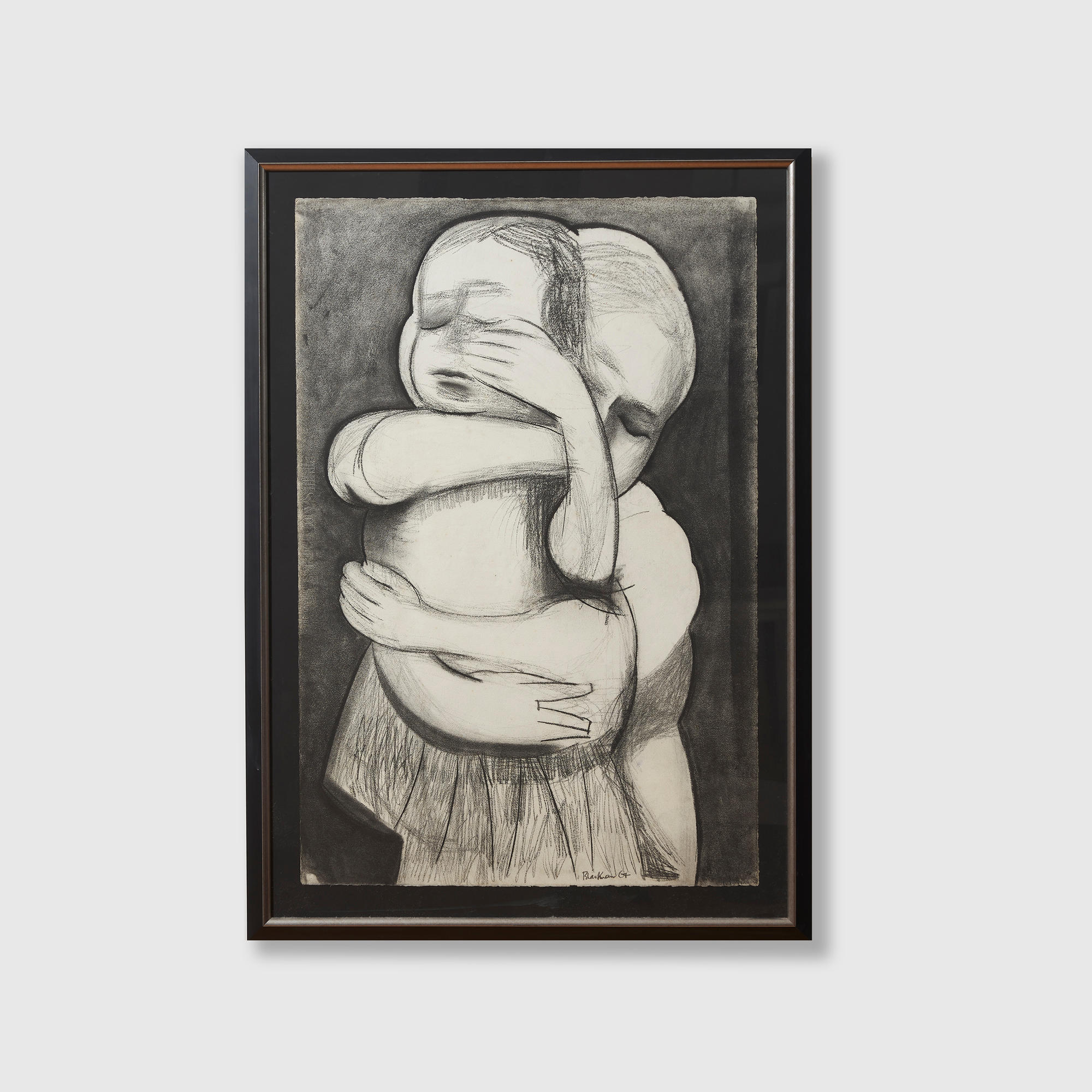

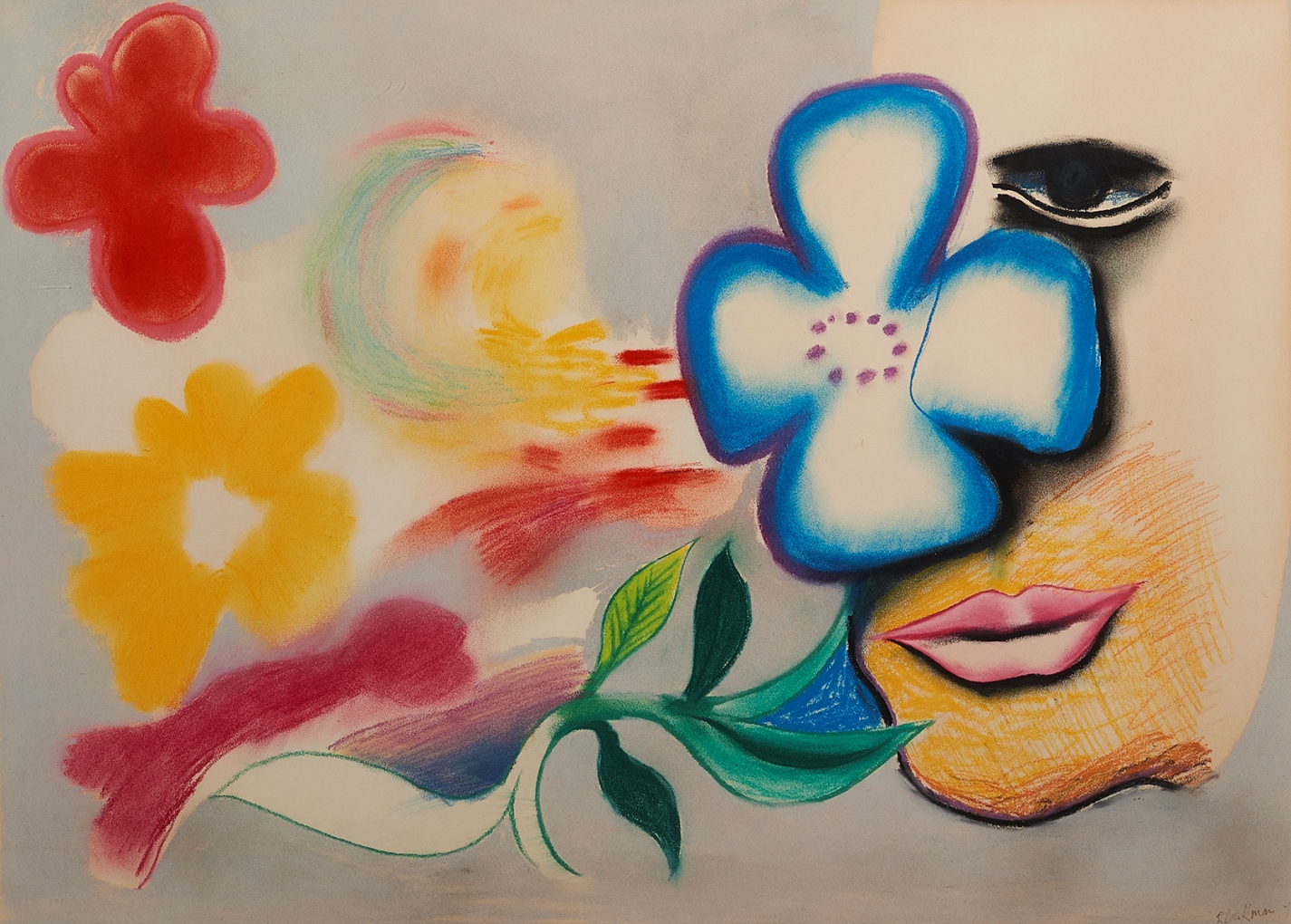
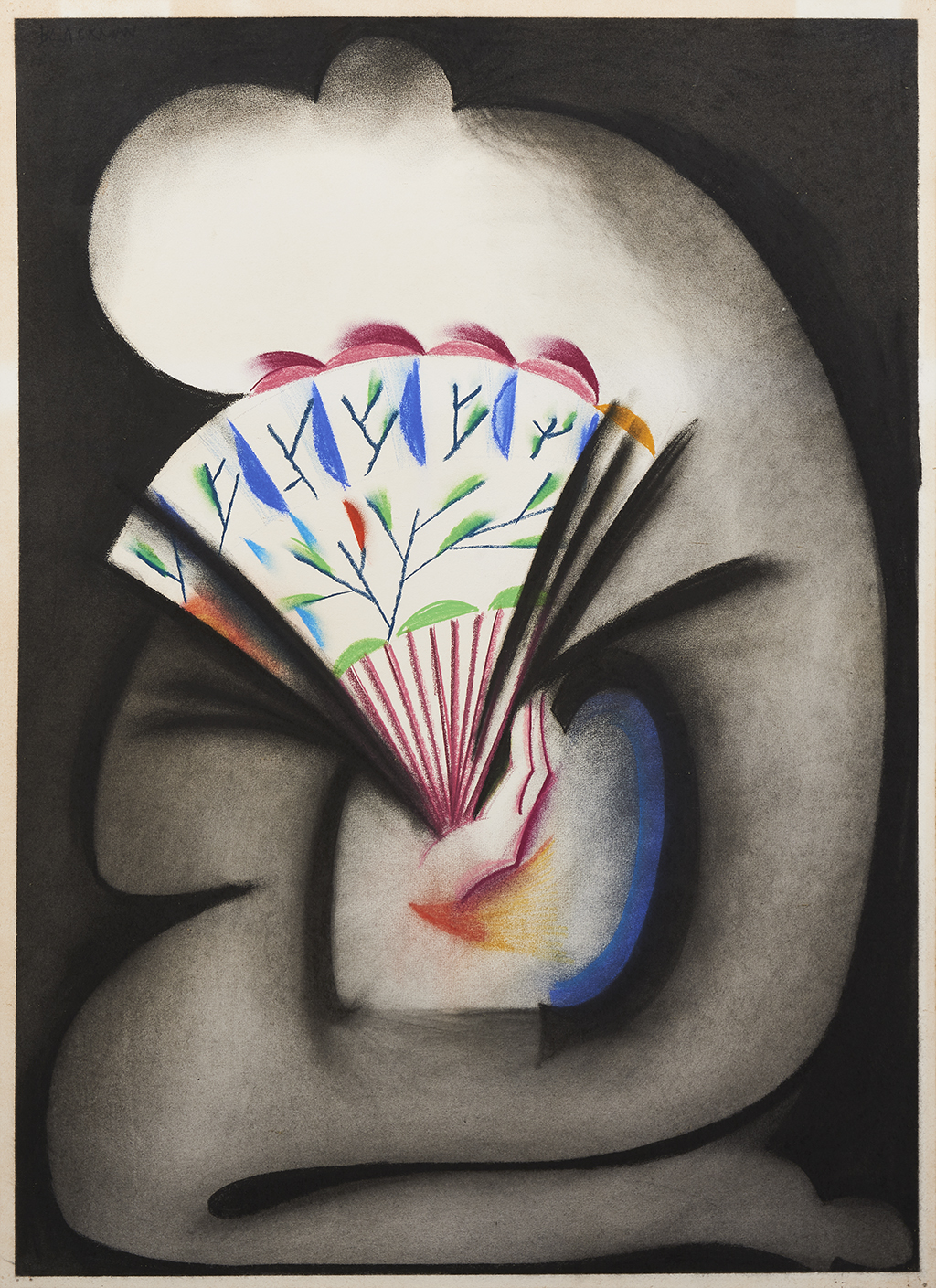
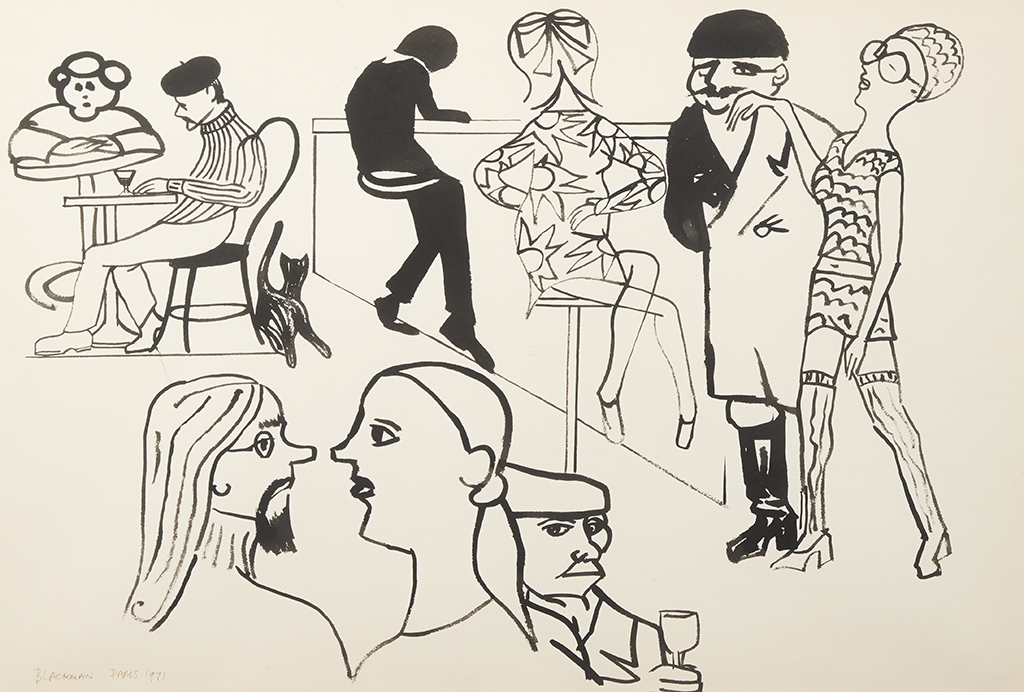
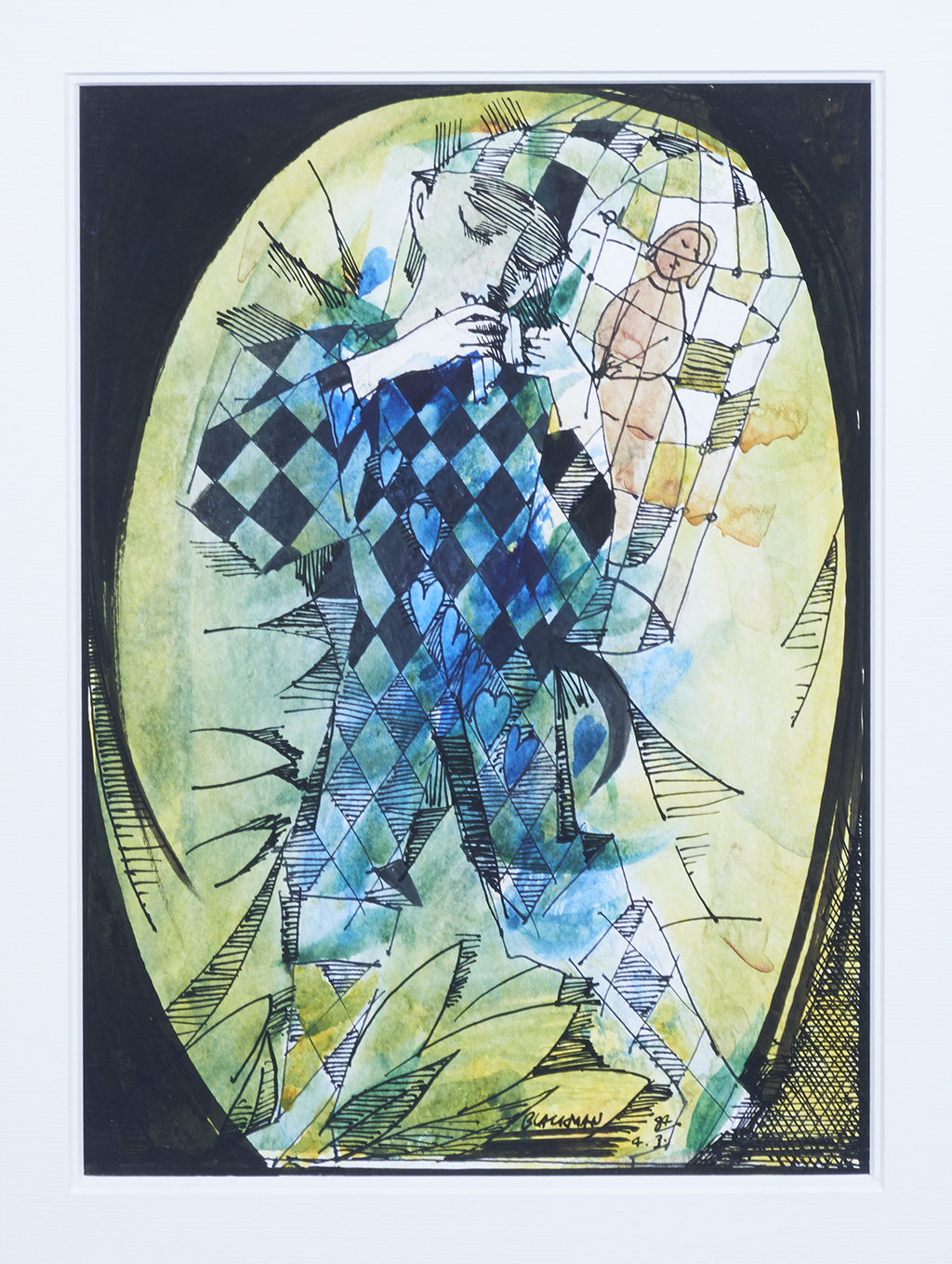

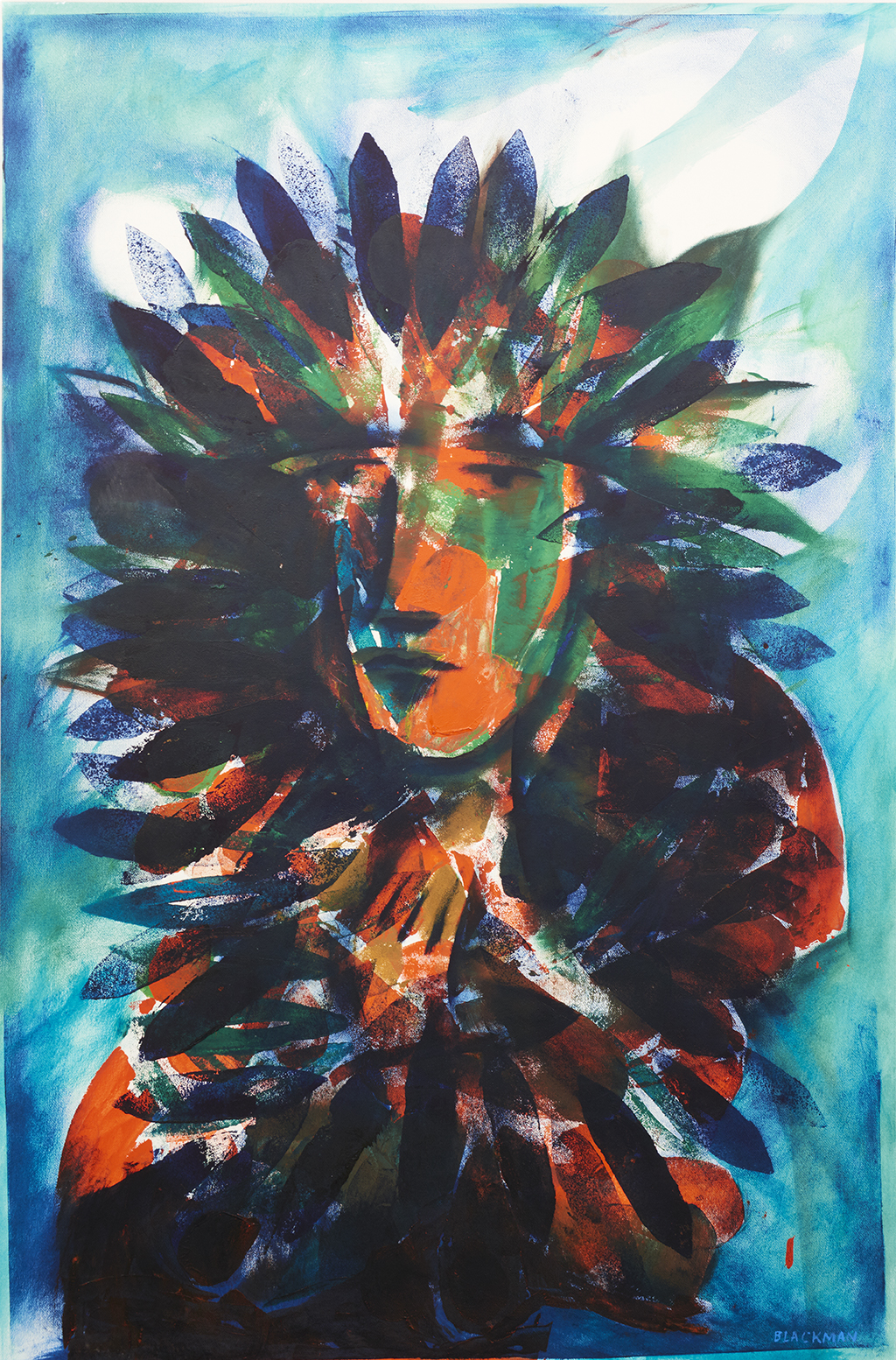
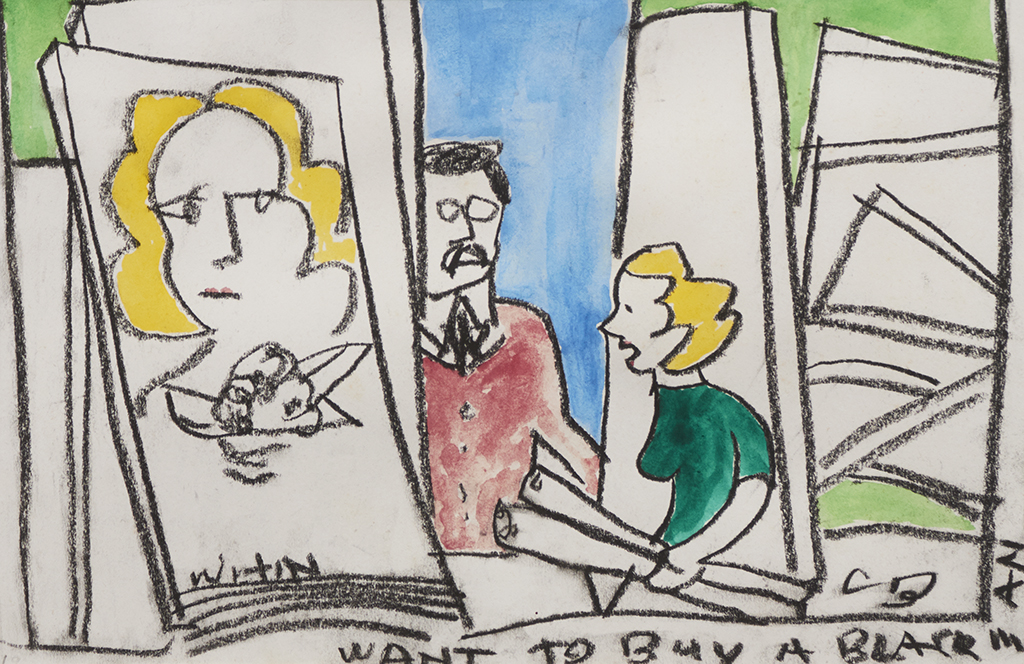
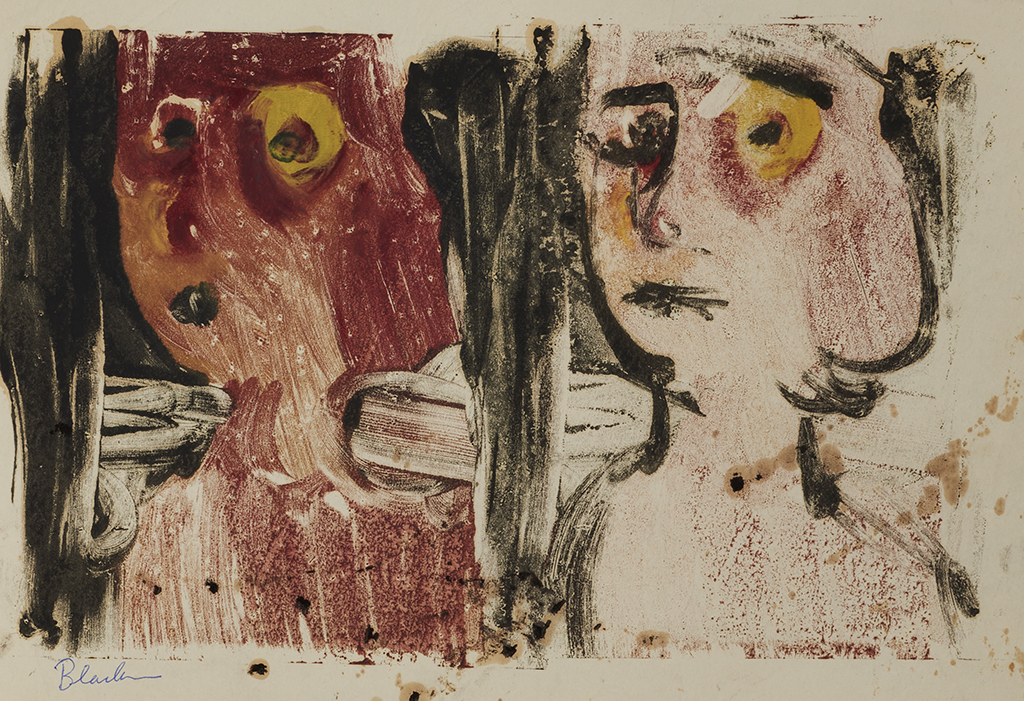
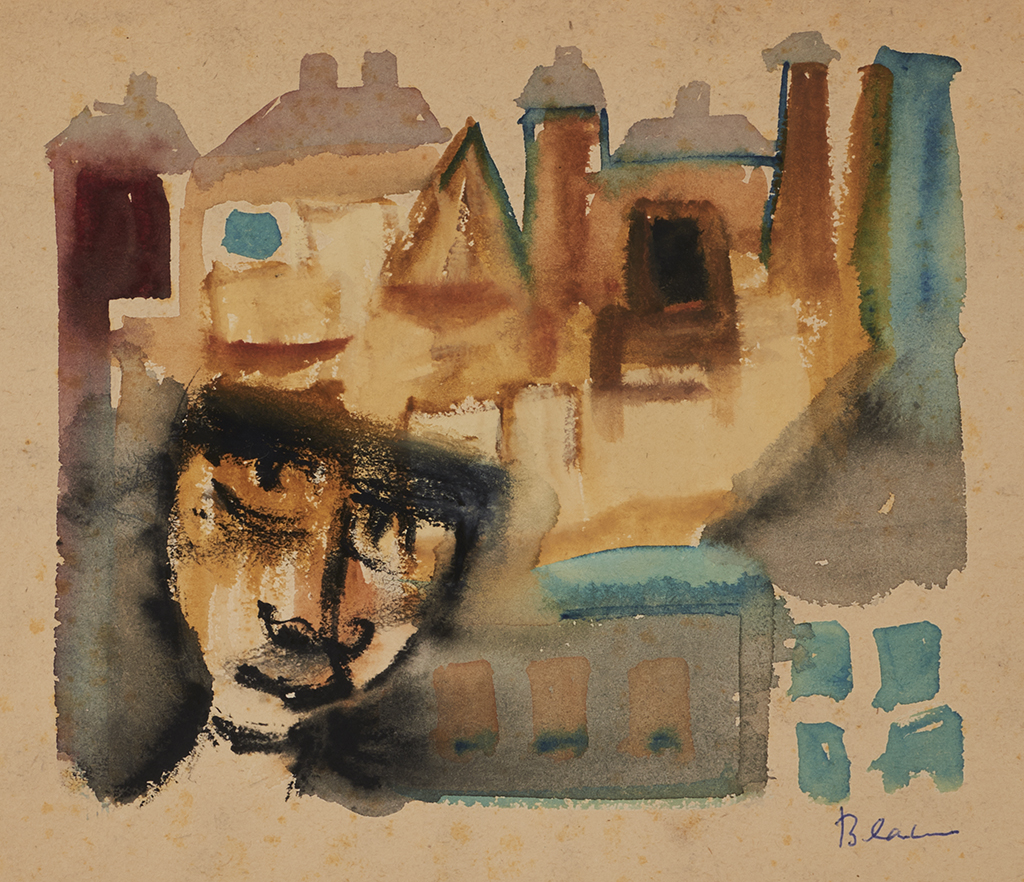


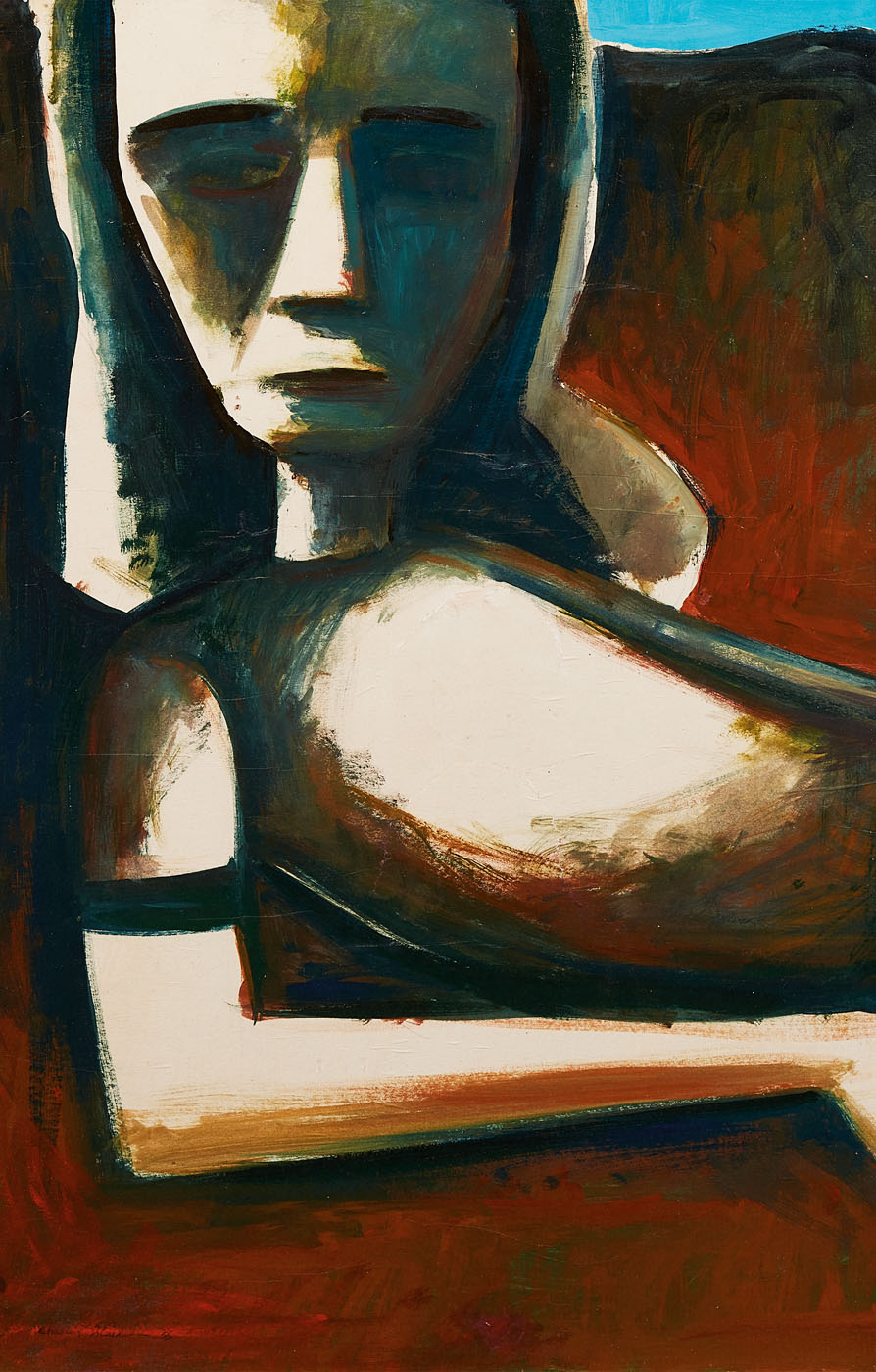
Testen Sie LotSearch und seine Premium-Features 7 Tage - ohne Kosten!
Lassen Sie sich automatisch über neue Objekte in kommenden Auktionen benachrichtigen.
Suchauftrag anlegen